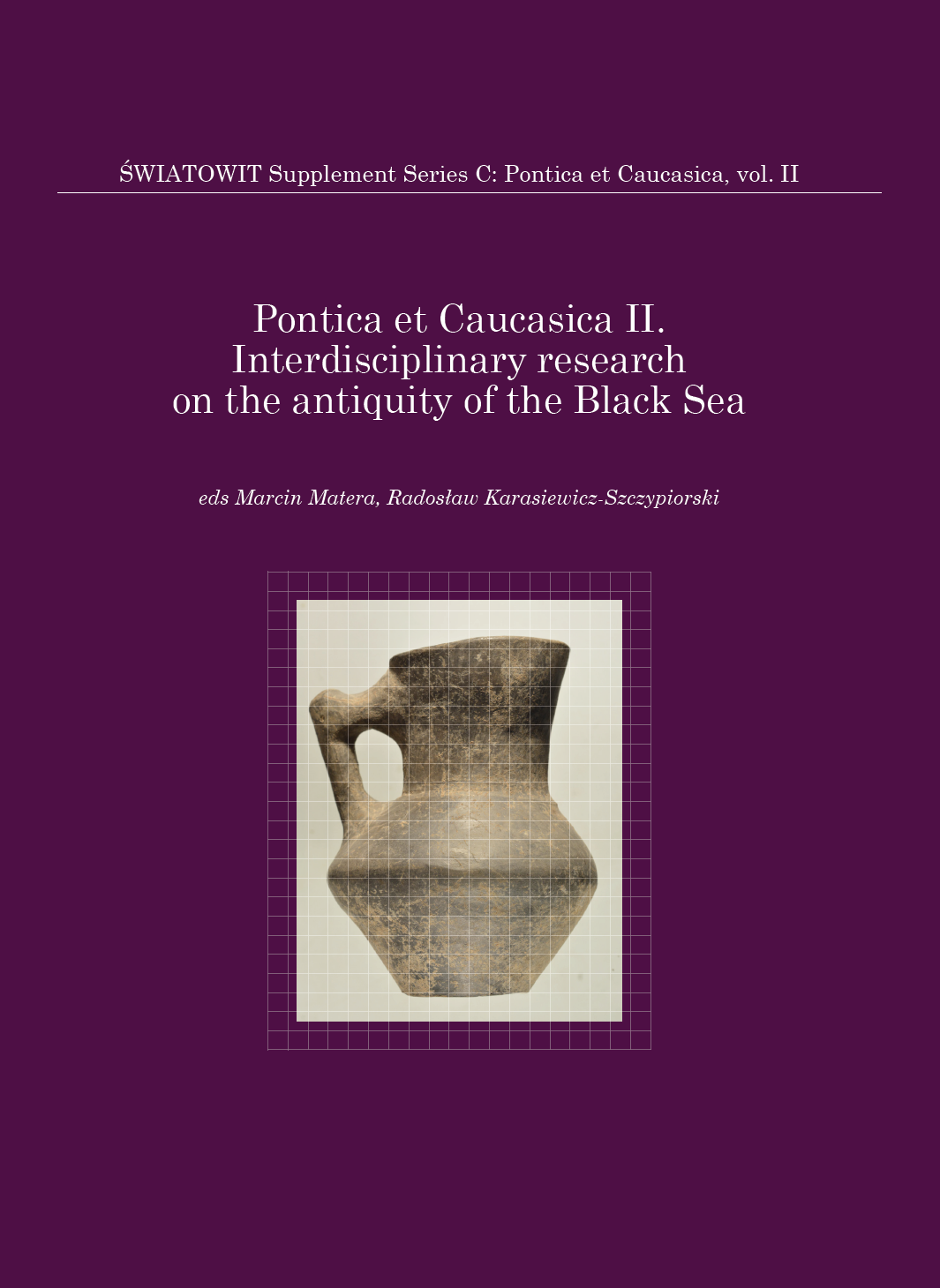Монети типу «Дельфін» з приміських садиб Ольвії Понтійської
Coins of “Dolphin” type from the suburban estates of Pontic Olbia
Author(s): Valentina A. Papanova, Svetlana N. Lyashko, Fedya Winner Cairo
Subject(s): Archaeology
Published by: Wydawnictwa Uniwersytetu Warszawskiego
Keywords: сoins of “Dolphin” type; suburban estates; dating; systematize; stratigraphy; ceramic material; manufacturing defects
Summary/Abstract: Coins of “Dolphin” type are one of the oldest coins which were in circulation in Olbia and its area. Coins of this type are of great interest in the two suburban estates of Shyroka Balka (Broad Hollow) 6 (οἶκος) of the second third of the 5th – beginning of the 3rd century BC. and Shyroka Balka (Broad Hollow) 7 (χωρίον) of the late 5th – 30’s of the 4th century BC. On these estates 492 copper/bronze coins of different denominations including 144 dolphin ones (29%) were excavated. On the χωρίον there were excavated 207 coins of the 5th – 4th century BC and 7 dolphin coins (3%). A very interesting coin hull οἶκος contains 285 coins, including 137 dolphin coins or 29%, which is 7 times more than in the χωρίον. As for the dating of dolphin coins , there is no unanimous view on their existence to this day. There are several similar situations with the classification of dolphins. The Kharko-Lapin classification is considered the most successful typologically and chronologically. Not all researchers agree with these classifications because they believe that no classification is true. The reason for that are that attempts to systematize are based only on stylistic observations and are not supported by stratigraphy of findings. Therefore, of particular interest is the group of dolphin coins find (50 specimens) in a closed complex on the oikos (οἶκος) in the economic pit no. 30, which aggregate 36% of all coins of this type found on the oikos (οἶκος). The pit also contained ceramic material of the 6th–4th century BC. It is interesting, that six coins (12%) had a manufacturing defects. Casting defects largely influenced the deviation of the coin mass from normal. Circulation of defective dolphin coins once again confirms that these coins did not have a clearly defined face value and were accepted by weight. Analysis of the group of dolphin coins find once again confirms the simultaneous circulation and their chronological sequence, clarifies their dating. Probably the release of Olbian dolphin coins is ended at the beginning of the three third of the 6th century BC and associated with the siege of Pontic Olbia by Zopyrion in 331 BC.
Book: Interdisciplinary research on the antiquity of the Black Sea. Volume II
- Page Range: 161-174
- Page Count: 14
- Publication Year: 2021
- Language: English, Russian
- Content File-PDF

